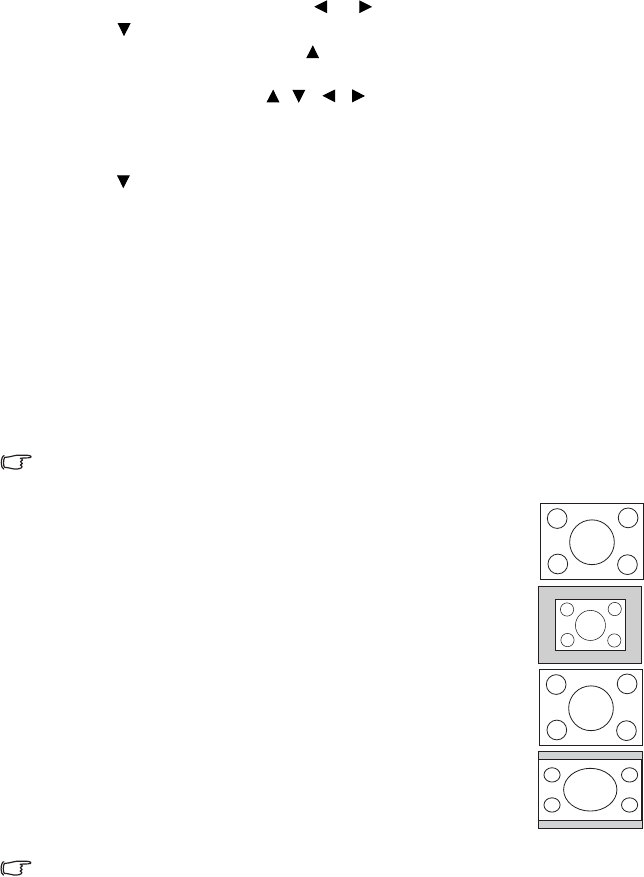
ViewSonic 21 PJ513D/PJ513DB
3. To restore the picture to its original size, press AUTO. You can also press D. ZOOM
-. When the key is pressed again, the picture is further reduced until it is restored to
the original size.
• Using the OSD menu
1.
Press MENU/EXIT and then press or until the DISPLAY menu is highlighted.
2. Press to highlight Digital Zoom.
3. Press MODE/ENTER and press to magnify the picture to a desired size.
4. Press MODE/ENTER to activate the Pan functionality.
5. Use the directional arrows ( , , , ) on the projector or remote control to
navigate the picture.
6. To reduce size of the picture, press MODE/ENTER to switch back to the zoom in/out
functionality, and press AUTO to restore the picture to its original size. You can also
press repeatedly until it is restored to the original size.
Selecting the aspect ratio
The 'aspect ratio' is the ratio of the image width to the image height. Most analog TV
and computers are in 4:3 ratio, which is the default for this projector, and digital TV
and DVDs are usually in 16:9 ratio.
With the advent of digital signal processing, digital display devices like this projector
can dynamically stretch and scale the image output to a different aspect than that of the
image input source.
You can change the projected image ratio (no matter what aspect the source is) by
entering DISPLAY > Aspect Ratio. Select an aspect ratio to suit the format of the
video signal and your display requirements. There are four aspect ratios available:
In the pictures below, the black portions are inactive areas and the white portions are active
areas.
1. Auto: Scales an image to fit the projector’s native resolution(4:3).
This is suitable when you want to make most use of the screen
2. Native: The image is projected as its original resolution, and
resized to fit within the display area proportionally. For input
signals with lower resolutions, the projected image will display
smaller than if resized to full screen. You could adjust the zoom
setting or move the projector towards the screen to fit for the
image size if necessary. You may also need to refocus the
projector after making these adjustments.
3. 4:3: Scales an image so that it is displayed in the center of the
screen with a 4:3 aspect ratio. This is most suitable for 4:3 images
like computer monitors, standard definition TV and 4:3 aspect
DVD movies, as it displays them without aspect alteration.
4. 16:9: Scales an image so that it is displayed in the center of the
screen with a 16:9 aspect ratio. This is most suitable for images
which are already in a 16:9 aspect, like high definition TV, as it
displays them without aspect alteration.
16:9 aspect ratio is only sourced through the Component Video input when being fed an
appropriate 16:9 aspect signal. See "Connecting a Component Video source device" on page
14 and "Obtaining a preferred projected image size" on page 8 for details.


















